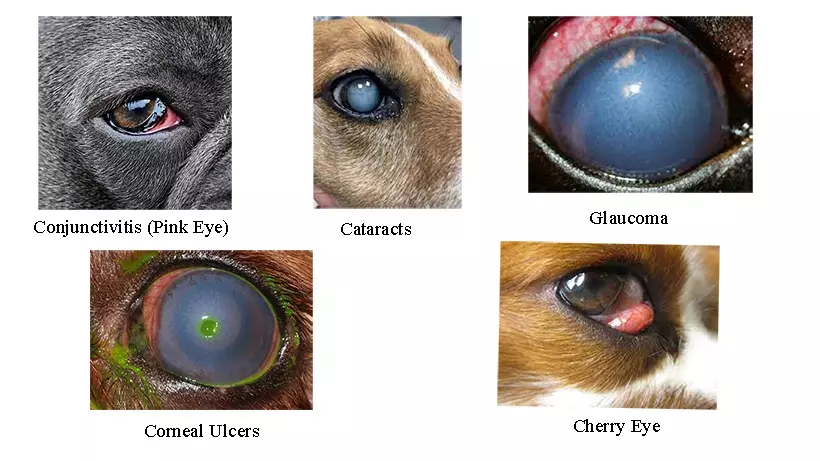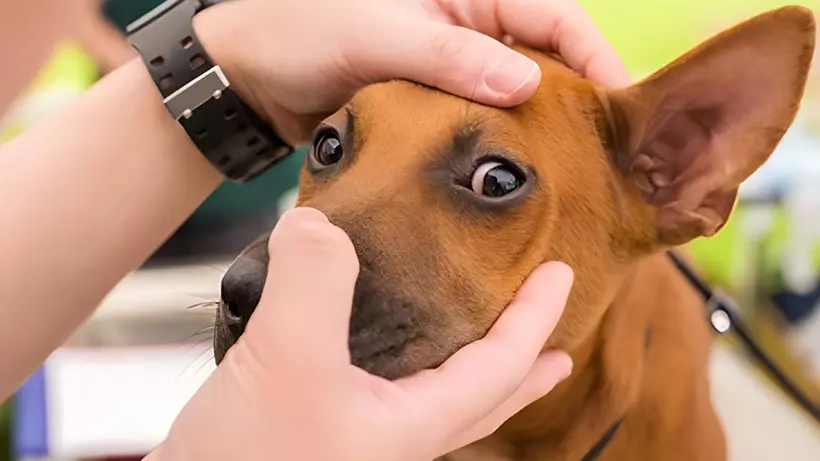Dog Eye Health: Common Eye Problems in dogs, Causes, Management
Introduction
A dog’s eyes are not only the window to their soul but also an essential aspect of their overall health. Just like humans, dogs can experience a range of eye problems that, if left untreated, can lead to discomfort and potentially even vision loss. In this blog, we will explore common eye problems in dogs, their underlying causes, and effective strategies for managing and maintaining your furry friend’s eye health.
Some Common Eye Problems in Dogs
- Conjunctivitis (Pink Eye): Conjunctivitis is a common eye condition in dogs, characterized by red, swollen, and itchy eyes. It can be caused by allergies, irritants, or bacterial and viral infections.
- Cataracts: Cataracts are a clouding of the lens in the eye, leading to impaired vision. They can be hereditary or develop due to aging, diabetes, or injury.
- Glaucoma: Glaucoma is an increased pressure within the eye, which can damage the optic nerve and lead to vision loss. It is often a painful condition and requires immediate attention.
- Cherry Eye: Cherry eye occurs when a gland in the dog’s third eyelid prolapses, causing a red, swollen mass in the corner of the eye.
- Corneal Ulcers: Corneal ulcers are open sores on the surface of the eye that can result from injury, foreign objects, or infections.
- Dry Eye (Keratoconjunctivitis Sicca): This condition occurs when the eyes do not produce enough tears, leading to dry, red, and irritated eyes.
- Entropion and Ectropion: Entropion is when the eyelids roll inward, causing the lashes to rub against the eye, while ectropion is when the eyelids droop or roll outward. Both can lead to eye irritation and discomfort.

Causes of Dog Eye Problems
Understanding the causes of these common eye problems in dogs can help in their prevention and management:
- Genetics: Some breeds are more prone to certain eye conditions due to their genetics. For example, cataracts are common in breeds like the Poodle and Cocker Spaniel.
- Environmental Factors: Allergens, irritants, and pollutants in the environment can lead to conjunctivitis and other eye issues.
- Injuries: Trauma to the eye from accidents, fights, or foreign objects can cause corneal ulcers or other injuries.
- Infections: Bacterial and viral infections, such as canine distemper or canine herpesvirus, can lead to various eye conditions.
- Age and Health: Aging dogs are more susceptible to cataracts and glaucoma. Underlying health issues like diabetes can also contribute to eye problems.
Managing Dog Eye Problems
- Regular Eye Exams: Schedule regular eye check-ups with your veterinarian, especially if your dog is a breed prone to eye issues.
- Proper Diet and Hydration: Ensure your dog’s diet is balanced and contains essential nutrients like omega-3 fatty acids, which promote eye health. Keep them hydrated to prevent dry eye.
- Cleanliness: Keep your dog’s eyes clean by gently wiping away discharge with a clean, damp cloth.
- Medication: Follow your vet’s prescribed treatment plan for eye conditions, including medications and eye drops.
- Surgery: In some cases, surgical intervention may be necessary to correct eye problems like cataracts or cherry eye.
Conclusion
Caring for your dog’s eye health is crucial to ensure they lead a happy and comfortable life. Regular eye examinations, good nutrition, and a safe environment can go a long way in preventing and managing common eye problems. Remember that any sudden changes in your dog’s eye appearance or behavior should be promptly addressed by a veterinarian to ensure the best possible outcome for your beloved furry companion.
